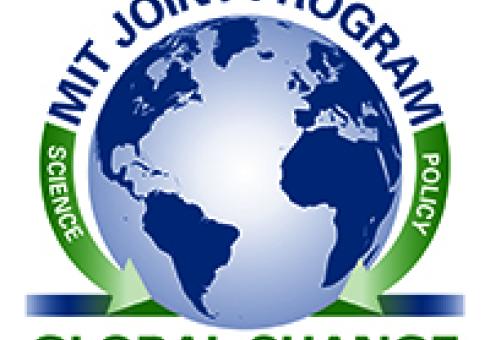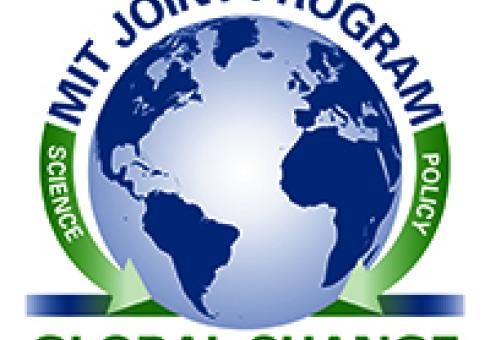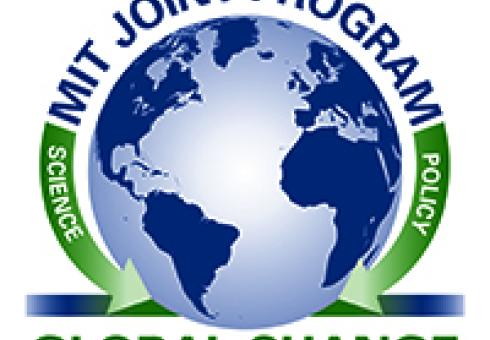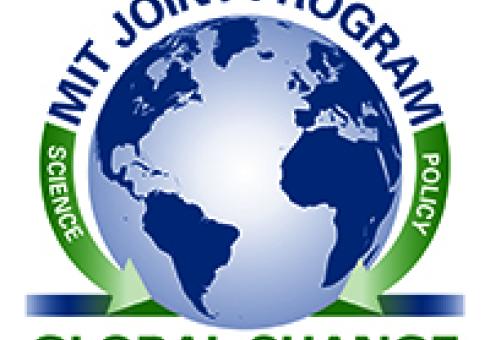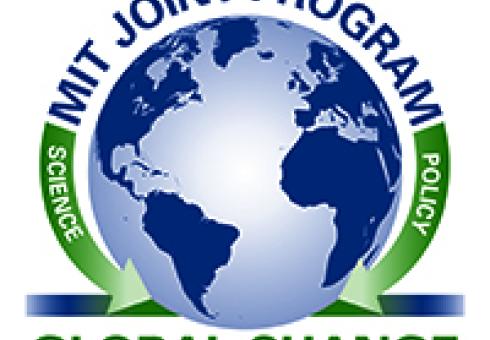MIT analysis suggests generating electricity from large-scale wind farms could influence climate — and not necessarily in the desired way
Wind power has emerged as a viable renewable energy source in recent years — one that proponents say could lessen the threat of global warming. Although the American Wind Energy Association estimates that only about 2 percent of U.S. electricity is currently generated from wind turbines, the U.S. Department of Energy has said that wind power could account for a fifth of the nation’s electricity supply by 2030.
But a new MIT analysis may serve to temper enthusiasm about wind power, at least at very large scales. Ron Prinn,TEPCO Professor of Atmospheric Science, and principal research scientist Chien Wang of the Department of Earth, Atmospheric and Planetary Sciences, used a climate model to analyze the effects of millions of wind turbines that would need to be installed across vast stretches of land and ocean to generate wind power on a global scale. Such a massive deployment could indeed impact the climate, they found, though not necessarily with the desired outcome.
In a paper published online Feb. 22 in Atmospheric Chemistry and Physics, Wang and Prinn suggest that using wind turbines to meet 10 percent of global energy demand in 2100 could cause temperatures to rise by one degree Celsius in the regions on land where the wind farms are installed, including a smaller increase in areas beyond those regions. Their analysis indicates the opposite result for wind turbines installed in water: a drop in temperatures by one degree Celsius over those regions. The researchers also suggest that the intermittency of wind power could require significant and costly backup options, such as natural gas-fired power plants.
Prinn cautioned against interpreting the study as an argument against wind power, urging that it be used to guide future research that explores the downsides of large-scale wind power before significant resources are invested to build vast wind farms. "We're not pessimistic about wind," he said. "We haven't absolutely proven this effect, and we'd rather see that people do further research."
Daniel Kirk-Davidoff, a chief scientist for MDA Federal Inc., which develops remote sensing technologies, and adjunct professor of meteorology at the University of Maryland, has examined the climate impacts of large-scale wind farms in previous studies. To him, the most promising result of the MIT analysis is that it indicates that the large-scale installation of wind turbines doesn't appear to slow wind flow so much that it would be impossible to generate a desirable amount of energy. "When you put the wind turbines in, they are generating the kind of power you'd hope for,” he said. Tapping the wind resource Previous studies have predicted that annual world energy demand will increase from 14 terawatts (trillion watts) in 2002 to 44 terawatts by 2100. In their analysis, Prinn and Wang focus on the impact of using wind turbines to generate five terawatts of electric power.
[More... ]
Error message
- The link "news-item.php?id=88" is invalid. Valid URL's typically start with "https://" for external or "/" for internal links
- The link "../people/faculty.php?id=25" is invalid. Valid URL's typically start with "https://" for external or "/" for internal links
News and Outreach: Ronald Prinn
When there's more energy radiating down on the planet than there is radiating back out to space, something’s going to have to heat up. (This is the first of a two-part "Explained" on the scientific concepts underlying the concept of the greenhouse effect and global climate change. Part two deals with climate sensitivity.)
When people talk about global warming or the greenhouse effect, the main underlying scientific concept that describes the process is radiative forcing. And despite all the recent controversy over leaked emails and charges of poorly sourced references in the last Intergovernmental Panel on Climate Change report, the basic concept of radiative forcing is one on which scientists — whatever their views on global warming or the IPCC — all seem to agree. Disagreements come into play in determining the actual value of that number.
The concept of radiative forcing is fairly straightforward. Energy is constantly flowing into the atmosphere in the form of sunlight that always shines on half of the Earth's surface. Some of this sunlight (about 30 percent) is reflected back to space and the rest is absorbed by the planet. And like any warm object sitting in cold surroundings — and space is a very cold place — some energy is always radiating back out into space as invisible infrared light. Subtract the energy flowing out from the energy flowing in, and if the number is anything other than zero, there has to be some warming (or cooling, if the number is negative) going on.
It's as if you have a kettle full of water, which is at room temperature. That means everything is at equilibrium, and nothing will change except as small random variations. But light a fire under that kettle, and suddenly there will be more energy flowing into that water than radiating out, and the water is going to start getting hotter.
In short, radiative forcing is a direct measure of the amount that the Earth’s energy budget is out of balance.
While the concept is simple, the analysis required to figure out the actual value of this number for the Earth right now is much more complicated and difficult. Many different factors have an effect on this balancing act, and each has its own level of uncertainty and its own difficulties in being precisely measured. And the individual contributions to radiative forcing cannot simply be added together to get the total, because some of the factors overlap — for example, some different greenhouse gases absorb and emit at the same infrared wavelengths of radiation, so their combined warming effect is less than the sum of their individual effects.
In its most recent report in 2007, the IPCC produced the most comprehensive estimate to date of the overall radiative forcing affecting the Earth today. Ronald Prinn, the TEPCO Professor of Atmospheric Science and director of MIT's Center for Global Change Science, was one of the lead authors of that chapter of the IPCC's Fourth Assessment Report. Radiative forcing "was very small in the past, when global average temperatures were not rising or falling substantially," he explains.
[More... ]
Comprehensive analysis of the odds of climate outcomes under different policy scenarios shows significant benefits from early actions.
A new analysis shows that even moderate carbon-reduction policies now can substantially lower the risk of future climate change. But without prompt action, extreme changes could soon become much more difficult, if not impossible, to control.
Early detection may permit 'nipping it in the bud' — A gas used for fumigation has the potential to contribute significantly to future greenhouse warming, but because its production has not yet reached high levels there is still time to nip this potential contributor in the bud, according to an international team of researchers. Scientists at MIT, the Scripps Institution of Oceanography in San Diego and other institutions are reporting the results of their study of the gas, sulfuryl fluoride, this month in the Journal of Geophysical Research. The researchers have measured the levels of the gas in the atmosphere, and determined its emissions and lifetime to help gauge its potential future effects on climate.
Sulfuryl fluoride was introduced as a replacement for methyl bromide, a widely used fumigant that is being phased out under the Montreal Protocol because of its ozone-destroying chemistry. Methyl bromide has been widely used for insect control in grain-storage facilities, and in intensive agriculture in arid lands where drip irrigation is combined with covering of the land with plastic sheets to control evaporation. "Such fumigants are very important for controlling pests in the agricultural and building sectors," says Ron Prinn, director of MIT's Center for Global Change Science and a co-author on the new paper.
Prinn adds that "fumigation is a big industry, and it's absolutely needed to preserve our buildings and food supply." But identifying the greenhouse risks from this particular compound, before many factories have been built to produce it in very large amounts, would give the industry a chance to find other substitutes at a time when that's still a relatively easy change to implement. "Given human inventiveness, there are surely other alternatives out there," says Prinn. He describes this approach as "a new frontier for environmental science — to try to head off potential dangers as early as possible, rather than wait until it's a mature industry with lots of capital and jobs at stake." More ...
According to a team led by MIT researchers, the amount of methane in Earth's atmosphere shot up in 2007, bringing to an end a period of about a decade in which atmospheric levels of the potent greenhouse gas were essentially stable. Methane levels in the atmosphere have more than tripled since pre-industrial times, accounting for around one-fifth of the human contribution to greenhouse gas-driven global warming. Until recently, the leveling off of methane levels had suggested that the rate of its emission from the Earth's surface was approximately balanced by the rate of its destruction in the atmosphere. However, since early 2007 the balance has been upset, according to a paper on the new findings published in Geophysical Research Letters (view abstract).
The paper's lead authors, postdoctoral researcher Matthew Rigby and Ronald Prinn, the TEPCO Professor of Atmospheric Chemistry in MIT's Department of Earth, Atmospheric and Planetary Sciences, say this imbalance has resulted in several million metric tons of additional methane in the atmosphere. In addition to Rigby and Prinn, the study was carried out by researchers at Commonwealth Scientific and Industrial Research Organization (CSIRO), Georgia Institute of Technology, University of Bristol and Scripps Institution of Oceanography. These methane measurements come from the Advanced Global Atmospheric Gases Experiment that is supported by NASA and the CSIRO network. More...
Today's release of a widely anticipated international report on global warming coincides with a growing clamor within the United States to reduce greenhouse gas emissions and prevent the potentially devastating consequences of global climate change. "There's clear evidence that greenhouse gases have been increasing by very large amounts since preindustrial times, and the vast majority of these increases are due to human activity," said Prinn, whose specific task on the panel was to assess this issue.
There's one basic answer to the question, Why are we worried about energy? The answer is climate change, argues MIT's Ron Prinn: if there were no global warming threat associated with fuels like oil and coal, there'd be no crisis.

